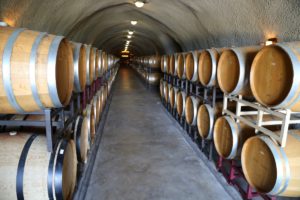

 Barnett Vineyards is located about 1.5 miles from the narrow and at times, steep Spring Mountain Road which passes through the Mayacamas mountains from St. Helena to Santa Rosa. Barnett is located off of a side road we usually refer to as the ‘summit trail’ as it winds along the spine of the Mayacamas mountains and leads to several wineries in this part of the Spring Mountain appellation.
Barnett Vineyards is located about 1.5 miles from the narrow and at times, steep Spring Mountain Road which passes through the Mayacamas mountains from St. Helena to Santa Rosa. Barnett is located off of a side road we usually refer to as the ‘summit trail’ as it winds along the spine of the Mayacamas mountains and leads to several wineries in this part of the Spring Mountain appellation.
This property (40 acres) was purchased in the summer of 1983 by Hal & Fiona Barnett. Hal grew up in Stockton, California and built a successful career in residential real estate development; his company was Barnett-Range Corp – they built both apartments and single-family homes. Fiona was born in England, lived in Mexico City for a few years as a child and grew up in Vancouver – eventually becoming a CPA. Their original intent was never to build a winery but rather to have a weekend private getaway location from San Francisco – someplace warmer than the foggy summers in San Francisco.
For a fairly small production they make a wide variety of wines; as of our latest visit, 10 different wines are produced. They are strong believers in sites with distinctive terroir and will source grapes from a variety of locations, not necessarily within Napa Valley, but based on where specific varieties grow best.
Starting in 1984, it took almost 2 years to clear and plant the vineyards including creating terraces to support vines on the steep hillsides (35+ degree slopes); today about 14 acres of vines are planted. One will see why it took so long to plant this vineyard when one visits the property; rugged hillsides dominate the surrounding landscape and are covered with thick brush. Some of their vineyards are located on very steep hillsides with wide terracing and slopes up to nearly 40%. In addition, it is clearly evident when walking up to the observation deck, just how rocky the soils are. Their wines are made from both estate and purchased grapes from other vineyards.
After planting vineyards, the Barnett’s were intending to sell the grapes. But they were unable to find a buyer in 1989 so they produced their first vintage with the help of founding winemaker Kent Rasmussen. This very limited production of estate Cabernet Sauvignon was only 232 cases.
After making the Barnett Vineyards Cabernet Sauvignon they noticed that a special part of the property kept producing an exceptional wine regardless of vintage. In 1991 they decided to bottle this as its own wine and called it Rattlesnake Hill. It is Barnett Estate’s flagship wine and arguably the bottling they are most known for. And in 1991 Hal and Fiona moved to the property full-time.
In 1984 when clearing this particular hillside they found 33 rattlesnakes; Hal and Fiona warned their daughters not to go near what they called “Rattlesnake Hill”. This piece of their property receives plenty of sunshine due to its exposure creating and extended ripening period. And it is a particularly rocky section of the property, causing the grapes to struggle, resulting in tiny berry sizes with a high skin to juice ratio. This site consistently produces intense, layered and complex wines.
After they produced the first vintage of Rattlesnake Hill Cabernet Sauvignon, Hal and Fiona decided to find out how their wines ranked. So they sent samples of both their estate Cabernet Sauvignon and the Rattlesnake Hill Cabernet Sauvignon to wine critic, Robert Parker.
But then the Barnett’s left on vacation. Parker tried to call them but kept getting an answering machine which was taking no more messages because it was full (remember those?!). So he wrote them a personal letter requesting two cases of the Rattlesnake Cabernet Sauvignon and one case of their estate Cabernet Sauvignon. He mentioned the scores he assigned to both wines including a 96 for the Rattlesnake Hill. This letter is framed and hangs inside the barrel room.
After the Barnett’s returned from vacation, they were delighted to read his correspondence. And then the phones started ringing and demand far outpaced their limited production of these wines. But this was the watershed moment which inspired them to continue to build their fledgling wine brand.
David Tate has been their winemaker and general manager since 2007. Prior to his tenure, Nile Zacherle made the wines (David Arthur, Mad Fritz Brewing). The wanderlust gene caught David early on – leaving his native Victoria Island in British Columbia in 1994 he hitch-hiked for 6 months on an epic trip southward – eventually ending up in Peru. Looking to further expand his horizon and taking advantage of the benefits of being in the commonwealth, he turned his sights to Australia. Securing an Agricultural visa, he was given two choices for work – at a pig farm or at a vineyard in the Barossa Valley. He chose Barossa and the vineyards and ended up gaining valuable vineyard management experience at several wineries including at Rockford Wines. While in the Barossa he met a Frenchman whose family owns Domaine Richeaume in Provence, France; receiving an invite from the family, David packed up and moved to southern France and spent a year working for the winery.
Realizing he was more than intrigued by the world of wine, he returned to North American and earned his Bachelor’s Degree in Viticulture and Enology at Brock University in Ontario. While working in New Zealand following graduation a friend called and offered him a job in California at Ridge Winery (their Montebello property). It was at Ridge that David was introduced to mountain grown Cabernet Sauvignon. He spent five years there and was their assistant winemaker.
Ready for a change, he realized he wanted three criteria in his next job: full control over the vineyards and winemaking, work with a small producer and continue to make mountain grown wines. In 2007 he was introduced to Hal and Fiona Barnett who offered him his desired criteria.
The 3,0000 square foot cave was built between 2008 and 2009. While drilling they ran into hard andesite and work progressed extremely slowly, sometimes only a foot a day. The Barnett wines are produced naturally, with minimal sulphur dioxide added, and no enzymes. Their red wines are aged entirely in French oak, typically using between 65% and 100% new barrels.
Tastings often begin in the barrel room and weather permitting will proceed over to the entrance to the cave. This winery has some of the best views on Spring Mountain especially from in front of the cave entrance at about 2,000 feet. Panoramic vistas are offered of Mt. St. Helena and directly down into the northern Napa Valley floor all the way across the valley to other ridge tops including Howell Mountain.
The Glass Fire burned through their property in 2020 but fortunately the winery building was saved. However, the fire did destroy about 30% of their vineyards, which have since been replanted. And the observation deck which arguably provided some of the best views to the east from their property was destroyed. This has been rebuilt but as of our latest visit to the property is no longer being used for hosting visitors. As a result of this fire, no estate wines were produced in 2020.
The second generation is now involved in the operations; in 2024, one of Hal and Fiona’s three daughters, Stephanie joined the Barnett team full time overseeing Business Development, leaving her previous job as Partner Manager at Walmart in San Francisco.
Select Wines


 Whites
Whites
The 2023 Barnett Vineyards Andrews Vineyard Dry Creek Sauvignon Blanc is light to medium straw in color; the bouquet is highly aromatic offering scents of star jasmine, citrus blossom and other spring white florals accompanied by lychee, passion fruit, pineapple guava, red apple and pear. This is a fully ripe expression of the variety, favoring the tropical side of the aromatic and flavor spectrum. Stone fruited with flavors of peach, apricot, yellow nectarine, mango and mandarin orange. There is a perceived sweetness of fruit paralleled by a brightness of acidity. Richly flavored. This wine is highly enjoyable on its own accord.
The 2022 Barnett Vineyards Sangiacamo Vineyards Carneros Chardonnay is deep gold in color; the bouquet offers scents of honeycomb, melting butter, butterscotch, almost overripe cantaloupe, baked pineapple and a lighter note of hazelnut. Intensely flavored including of ripe pineapple, apricot, peaches in light syrup and ripe mango. Showcases a sweetness and ripeness of stone fruits. There is a note of butter but its not a prominent attribute. Aside from the richness of flavor its texture is also a hallmark character featuring a silky, creamy and rounded texture. Not viscous. The finish is persistent and fruit-filled. We wouldn’t mind laying this wine down for several years.
The 2006 Barnett Vineyards Chardonnay was sourced from Anderson Valley in northern Mendocino County. This wine is all about balance with not one aspect dominating. The bouquet is highly aromatic and somewhat floral; the mouth feel is smooth and supple with mineral notes and toasted almonds.
Reds
The 2022 Barnett Vineyards Pinot Noir Tina Marie Vineyard Green Valley (Russian River Valley) is medium ruby in color. The aromatics are beautiful expression of both its inherent Pinot Noir fruit and spice characteristics. These include scents of raspberry, cherry cola, wild strawberries, pomegranate, white pepper, tea leaf and dried rose petals. The palate is balanced with a creamy texture showcasing supple and fine-grained tannins. The palate features flavors of strawberry, raspberry, red licorice and cranberry. Tate never wants to produce a Pinot Noir with a quick finish; he has been successful in that regard with this bottling as the fruit continues to shine after the subtle grip of the tannins has fallen off. Medium acidity. This wine smells like Pinot Noir which is the highest compliment one can bestow upon a wine from this variety. Barnett has been producing Pinot Noir from this vineyard since 2004.
The 2021 Barnett Vineyards Cabernet Franc, Spring Mountain District is blended with 5% Merlot; this wine is deep ruby. The bouquet reveals scents of red cherry, dark plum, dry earth and pink peppercorn. Highly flavorful and more red fruited than dark. The palate sports flavors or red plum, currant and cranberry. The grainy and somewhat chalky tannins outpace the fruit on the extended finish. The palate is brightly lit, mouth watering, red fruited and features a vivacious finish. Lingers with a light drying character and a note of dried tobacco leaf. This is one of their smaller production wines and usually is blended with a small percentage of Merlot.
The 2017 Barnett Vineyards Cabernet Franc, Spring Mountain District is 90% Cabernet Franc and 10% Merlot and was aged 22 months in French oak. The genesis of this wine was a very limited production offering to wine club members only. Due to its popularity, production increased and now it is an annual offering. Portrays an elegant bouquet – centered mostly on fruit including blackberry, boysenberry and plum but with other nuances including sandalwood, truffle oil, hints of vanilla, dust and tobacco leaf. Approachable across the palate with flavors of cherry and plum. Vanilla, toasted oak, red cherry, baking spices and dry tobacco show more towards the end of the palate. A bright finish is anchored by a lively thread of acidity. The tannins are slightly tight in their youth – not rough in texture but certainly noticeable. Cellar this one for 5 to 7 years, that should be plenty of time for the tannins to soften and become more integrated.
The 2016 Barnett Vineyards MMV (mountain meets valley) was Barnett’s first ever release of this wine and was sourced from the nearby York Creek Vineyard and a vineyard on the valley floor in Calistoga. Fairly fruit forward on the bouquet with aromas of ripe plum and blackberry along with a hint of cedar. The wine flows nicely across the palate with a pleasing suppleness. The wine is balanced with a noticeable firm grip of tannins that feel somewhat chalky. Not course in their feel. The finish is savory with lingering notes of darker spices and cedar box.
The Barnett Merlot is noteworthy as it often exhibits slightly different flavors and spices than most Merlot wines made from grapes grown much lower in elevation on the valley floor. This bottling tends to be more robust, exhibiting textural characteristics often found in Napa Valley Cabernet Sauvignon.
The 2021 Barnett Vineyards Merlot, Spring Mountain District is deep ruby; the bouquet offers aromas of dark plum, blackberry, and dark cherry. There is also a light note of old cedar box and cocoa powder. The palate reveals an intensity of flavor, bright acidity and lightly gravelly textured tannins. Flavors include red cherry, plum, black currant, dark raspberry and blackberry. The extensive fruit-filled finish is brightly lit. We didn’t hesitate to write the word savory to describe its lingering characteristics including dried tobacco, crushed peppercorn, dust, dried tobacco leaf and smoked sage. These characteristics ultimately outpace the fruit on the finish. We don’t often think of pairing with Napa Valley grown and bottled Merlot with steak but this would hold up nicely with a dry-rubbed steak or perhaps duck or venison. Or, it would be an ideal companion with the awesome tri-tip at one of California’s best BBQ houses, Copper Top in Big Pine, CA.


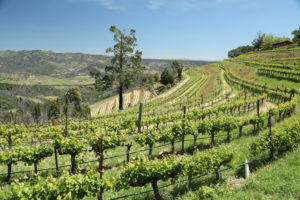 The 2004 Barnett Vineyards Merlot, Spring Mountain District (tasted 19 years post vintage) is brickish red in color; the bouquet reveals a number of tertiary aromas including dried red fruits, cooked blackberry, chocolate, coffee, caramel, nutmeg, toast, leather and tobacco leaf. The palate shows bright acidity focused on red fruits including currant, red cherry and cranberry. The tannins are soft and supple sporting a light and persistent dry character. The juicy finish lingers savory with notes of leather, dried tobacco, white pepper and old cedar.
The 2004 Barnett Vineyards Merlot, Spring Mountain District (tasted 19 years post vintage) is brickish red in color; the bouquet reveals a number of tertiary aromas including dried red fruits, cooked blackberry, chocolate, coffee, caramel, nutmeg, toast, leather and tobacco leaf. The palate shows bright acidity focused on red fruits including currant, red cherry and cranberry. The tannins are soft and supple sporting a light and persistent dry character. The juicy finish lingers savory with notes of leather, dried tobacco, white pepper and old cedar.
The Barnett Vineyards Cabernet Sauvignon is their most produced wine. The 2021 Barnett Vineyards Cabernet Sauvignon, Spring Mountain District is 88% Cabernet Sauvignon and 12% Petit Verdot. This wine is deep ruby and opaque; the aromatics are savory with notes of dried herbs including sage, dried earth, dark pepper (but not peppery) and dark plum. The palate is equally savory with flavors of red fruits including plum, cherry and currant. The mouthwatering and radiantly lit long finish lingers with dusty and gravelly tannins accompanied by notes of toasted cedar and dried tobacco leaf. And in this year, the Petit Verdot was showing so well that it was produced as a very limited production 100% varietal wine for club members.
Due to its popularity Rattlesnake Hill Cabernet Sauvignon is sometimes sold out and visitors are given barrel samples of this wine. This wine is always 100% varietal Cabernet Sauvignon. This wine is a barrel selection of their best lots; Tate rates each barrel by assigning them rankings with the A++ barrels set aside for this wine.
The 2021 Barnett Vineyards Rattlesnake Cabernet Sauvignon, Spring Mountain District. This wine is deep ruby and nearly opaque in the glass; the first aromatic we noted was petrichor, the smell one associates with rainfall on dry earth after a long time. And there is a similar note of water poured on hot slate rock. Earthy, with a dusty aromatic character along with a light woodsy cedar note. But there is more here including a floral component of violets, dried sage, Santa Rosa plum and a hint of sweaty leather. This is a rich and complex expression of this variety both in terms of texture and flavor. It offers flavors of dark plum, bramble, dark licorice and blackberry. The tannins sport a firm and extended grip with a pixelated character. There is also a note of lingering dried tobacco leaf. This wine simply brings ‘more’ to the table and is in a league of its own in comparison to the other Barnett Vineyards bottlings. Buy a three pack and set one down for opening in 5, 10 and 15 years.
Barnett Vineyards used to produce a vineyard designate Cabernet Sauvignon called Cyrus Ryan.
—
A combination of clear skies, warm weather, and a light breeze provide the ideal conditions to visit Barnett Estate. The views never get old. And the wines always stand up to the breathtaking vistas. During our visits over the years, we have always valued their personalized tasting experiences. In the case of inclement weather, tastings can be hosted inside the cave or their barrel room.
The winery and grounds can be rented for private events such as dinners. And it is recommended to book tastings at least several weeks in advance for busy summer and fall months. Production has grown significantly since the early days and is now approximately 7,000 cases per year.
The majority of their wines are sold direct to consumer through onsite visits and to club members. However they maintain a limited amount of distribution including in nearly 20 countries; domestically they are carried in more than 20 states, primarily in wine shops and restaurants. A limited number of Total Wine & More retail stores also carry select Barnett wines.
For more information, to purchase wines, to schedule a visit, to join the mailing list and or to join one the Wine Society with three offerings: Savor Collection, a mix of both red and white wines, Distinctly Reds, all red wines and Rattlesnake Allocation, visit: www.barnettvineyards.com
Entrance/Signs
Vineyards
Cave
Winery
Miscellaneous
La Caccia di San Giovanni, Tuscany Italy
In 2017 Barnett Vineyards entered into a winemaking partnership at La Caccia di San Giovanni, in Tuscany Italy. The owners of the property Dean & Tawney Macfarlan oversee 133 acres, 19 of which are planted to vines – located within a short drive of Siena. The 7,500 square foot Villa San Giovanni is also on site with a four-bedroom residence and two-bedroom annex that can be rented out by guests. A tasting room opened in 2020.
Their wines are called La Caccia di San Giovanni. However, this partnership was a fairly short one – as in 2020 the Barnett’s decided to focus entirely on Barnett Vineyards and are no longer involved with La Caccia di San Giovanni. However, during the partnership one estate wine was produced, the 2017 La Caccia di San Giovanni, a Super Tuscan blend of 50% Cabernet Sauvignon, 40% Sangiovese and 10% Petit Verdot, made by winemaker Paolo Caciorgna with input from David Tate.
Moving forward, the Barnett’s are no longer involved in the winemaking, but the estate wines will continue to be produced. And the current winemaking partnership is between Napa Valley based Gagnon-Kennedy Vineyards.







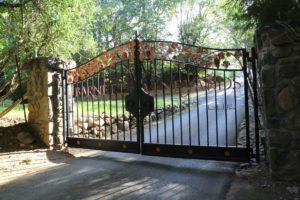
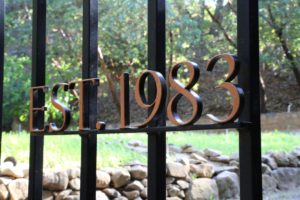


























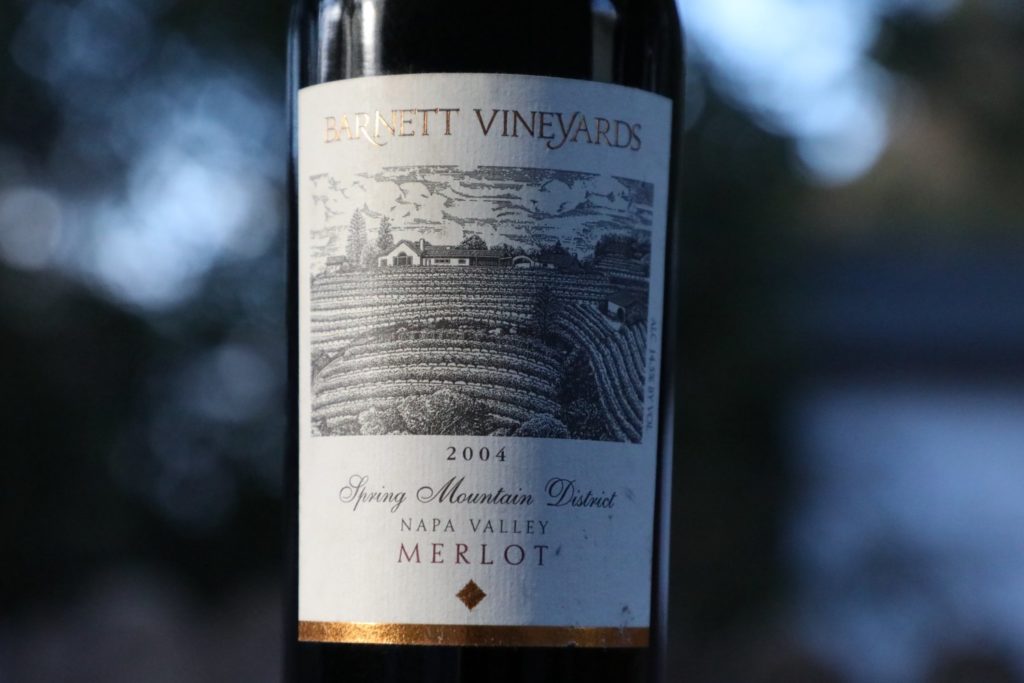
Leave a Reply